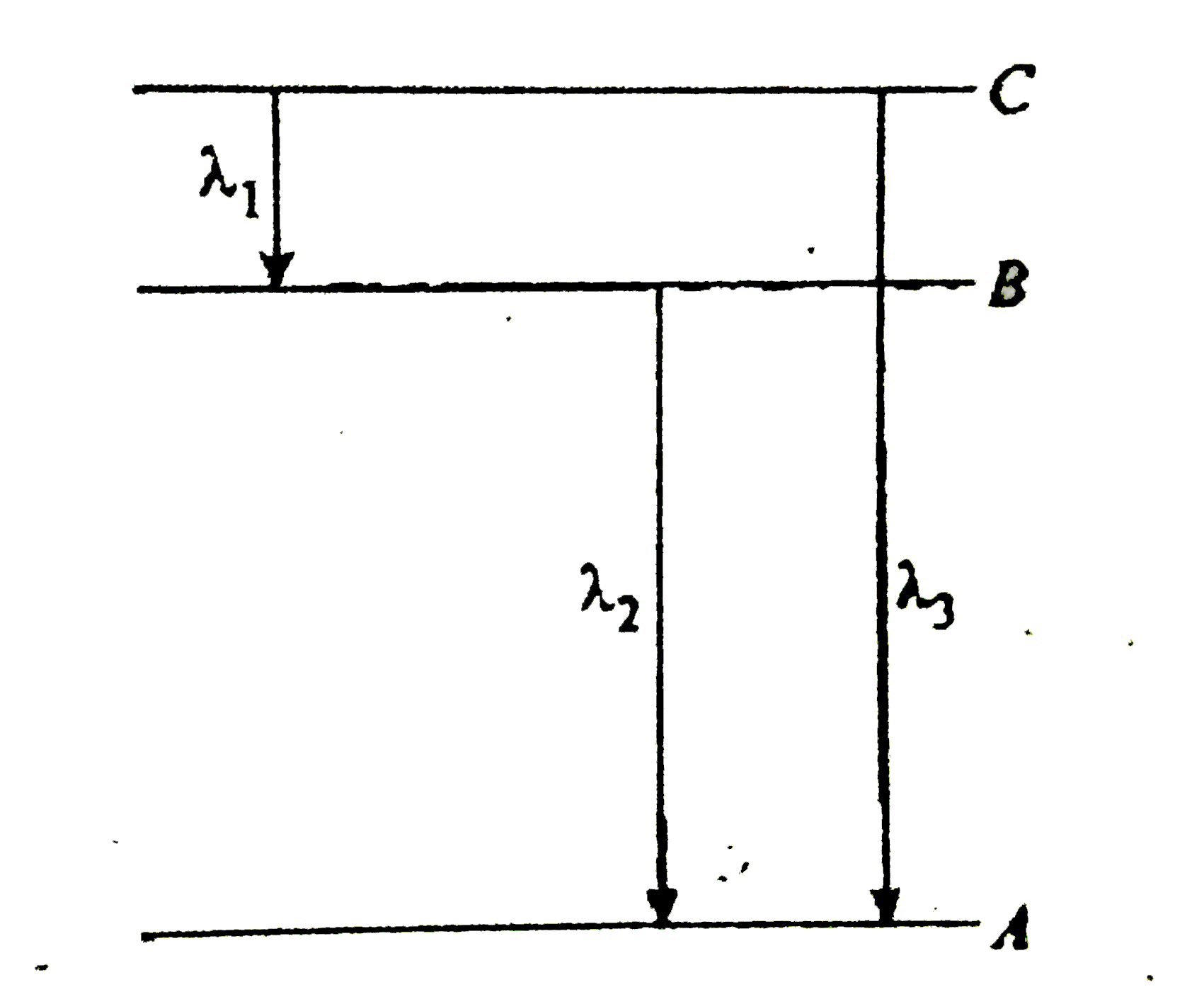In the transitions A, B and C (as shown) λ1=λ2λ3λ2−λ3 the wavelength λ1 corresponds to which transition, if λ2andλ1 corresponds to other two transitions

A
B
C
A or C
Let us asume walelength λ1,λ2andλ3 ssociated with transition A, B and C respectively.
EB+EA+EC
hv3=hv1+hv2
hcλ3=hcλ1+hcλ2orλ1=λ2λ1λ2−λ3
similarly, λ2=λ1λ2λ1−λ3
If we assume wavelength λ1 corresponds to transition, A result is λ1=λ2λ3λ2−λ3
If we assume wavelength λ1 corresponds to transition C the result will still be same .
Similar Questions
Energy levels A,B and C of a certain atom correspond to increasing values of energy i.e. EA<EB<EC .If λ1,λ2,λ3 are the wavelengths of radiation corresponding to transition C to B,B to A and C to A respectively, which of the following statements is correct ?

View SolutionThe wavelength of the first Lyman lines of hydrogen He+ and Li2+ ions and λ1,λ2&λ3 the ratio of these wavelengths is
View Solution
Knowledge Check
If λ1andλ2 are the wavelengths of the first members of the Lyman and Paschen series respectively, then λ1:λ2 is
A1:3B1:30C7:50D7:108x2(λ2−4λ+3)+y2(λ2−6λ+5)=1 will represent an ellipse if λ lies in the interval
A(−∞,1)∪(5,∞)B(−∞,−1)(5,∞)CRDnone of theseIn hydrogen atom, if λ1,λ2,λ3 are shortest wavelengths in Lyman, Balmer and Paschen series respectively then λ1:λ2:λ3 equals
A1:4:9B9:4:1C1:2:3D3:2:1
If a1=a,a2=b,an+2=an+1+an2,n≥0 then limn→∞an is a+λ1bλ2,(λ1,λ2εI) where λ1+λ2 is _______
View SolutionIf a1=a,a2=b,an+2=an+1+an2,n≥0 then limn→∞an is a+λ1bλ2,(λ1,λ2εI) where λ1+λ2 is _______
View SolutionThe wavelength of the first Lyman lines of hydrogen He+ and Li2+ ions and λ1,λ2&λ3 the ratio of these wavelengths is
View SolutionEnergy levels A,B and C of a certain atom correspond to increasing values of energy i.e. EA<EB<EC .If λ1,λ2,λ3 are the wavelengths of radiation corresponding to transition C to B,B to A and C to A respectively, which of the following statements is correct ?

View SolutionFor a certain atom, there are energy levels A, B, C corresponds to energy values EA<EB<EC
Choose the correct option if λ1,λ2,λ3 are the wave length of radiations corresponding to the transition from C to B, B to A and C to A respectively. .
View Solution
